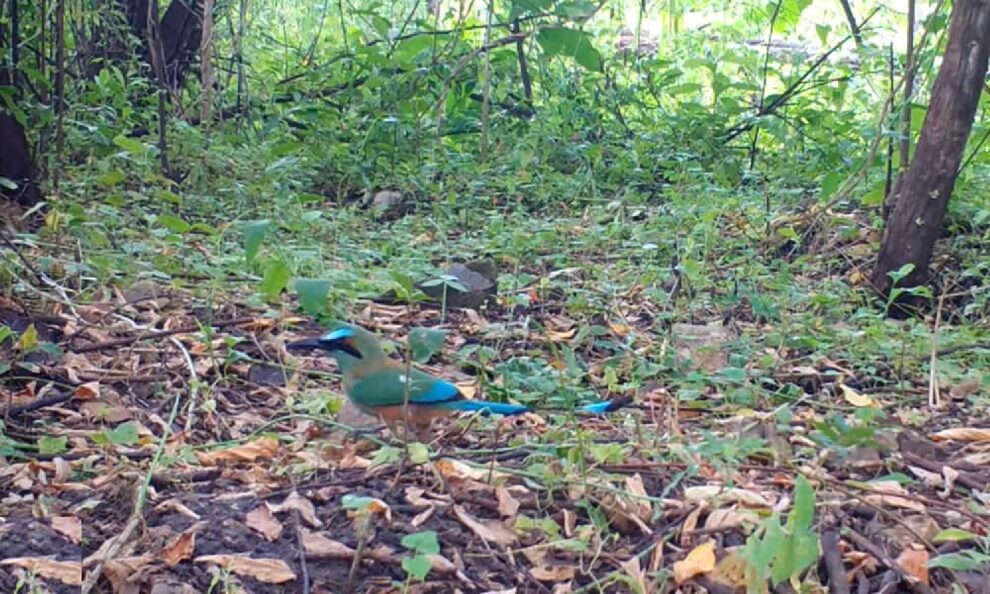Do you enjoy birdwatching? Are you a fan of colorful little birds with fancy tailfeathers? Well then, I’ve got the bird for you. Let’s meet the turquoise-browed motmot.
Let’s start with the names. In English our new friend is known as the turquoise-browed motmot because of its turquoise brow. Pretty straightforward. There’s a Spanish name to match, Momoto Cejiceleste, which translates to light blue eyebrowed motmot. I’ve heard two more Spanish names, each making a reference to a behavior pattern. Pájaro bobo translates roughly to ‘foolish bird,’ a name earned by the fact that they aren’t particularly skittish.
They’ll let people get fairly close to them, which I suppose can be foolish if the wrong type of person is doing the approaching. The other name, guardabarranco, means ‘ravine guard.’ This name comes from the fact that they excavate borrows in the sides of ravines or embankments to lay their eggs.
Turquoise-browed motmots are undeniably pretty birds. They’re a mix of green, blue, black, orange and turquoise. Their most interesting feature is their tail. The tail consists of two central feathers that have very long bare shafts that end in two blue and black circles. They resemble two paddles or tennis rackets.
I often identify wildlife in the forest through movement. One of the easiest ways to see a turquoise-browed motmot is having the movement of their paddle-tail catch your eye. Both sexes like to sit on a branch and waggle their tails back and forth. Males use this tail wiggle during mating season, in a ‘Hey baby, you like the way I move my tail?’ kind of fashion.
Outside of mating season, both males and females wiggle their tails in the presence of predators. It’s hypothesized that they’re signaling to the predator that ‘I see you and you won’t catch me if you try to eat me.’
As I noted above, one of the many names of this species of motmot is guadabarranco because they often appear to be sitting on a branch guarding a ravine. What they’re actually guarding is a three-inch wide, up to eight-foot-deep tunnel in said ravine. They lay three to five eggs at the end of the tunnel and are frequently seen ‘guarding the embankment,’ getting ready to fly into the tunnel and tend to the next generation of motmot.
I’ve been told that you can tell if a particular motmot tunnel has juveniles inside by taking a whiff of the tunnel entrance. If it stinks, somebody’s home. (The juveniles don’t exit the tunnel to poop.) While this theory makes sense, I’ve never tested it because it makes me nervous to stick my big nose into a mystery tunnel when I don’t know who’s inside.
What’s on the turquoise-browed motmot’s menu? Mostly insects. While they will swoop down and grab a small lizard or snake, most of their diet consists of beetles, butterflies, bees, dragonflies, and arachnids. They often locate a tasty-looking bug from their perch on a low-hanging tree branch, dive down and grab it, and then return to the branch to repeatedly smash the bug on the branch to put it out of its misery before sending it down the hatch.
Turquoise-browed motmots are mostly found in Guanacaste, and since I’m mostly found in Guanacaste, we see each other frequently. I record them fairly regularly with my camera traps as they take a sip from a water source or gobble up an insect. I’m happy to share a few of those clips with you in the video below.
Source : Ticotimes






























